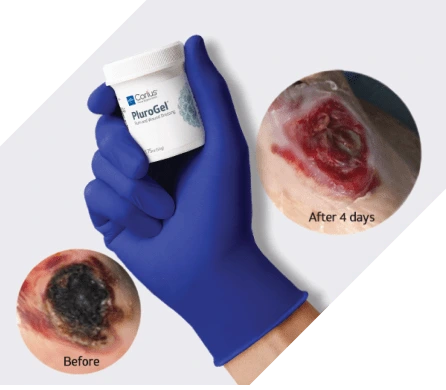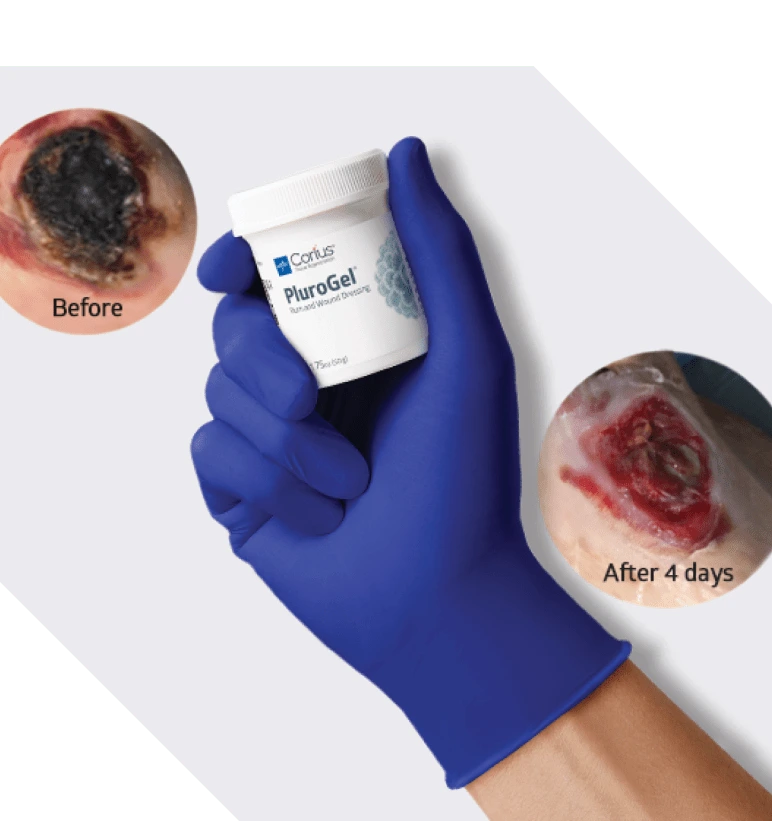Optimize wound bed prep with Micelle Matrix Technology™
Managing biofilm is essential to timely wound healing, especially for chronic wounds. What makes PluroGel Burn and Wound Dressing so effective at biofilm management? Surfactant micelles work together to hydrate the wound, control exudate and provide gentle debridement.
Helps reduce and disrupt biofilm
Reduces bacterial biofilm (in vitro) below detectable levels after 3 days.1
Softens, loosens and lifts debris
Drives away slough and necrotic debris to ready the wound bed.
Creates a moist wound environment
Keeps the wound moist, creating the right environment for healing.
Promotes patient comfort
Soothing formula so patients report less painful dressing changes.2
Discover how PluroGel transforms uncertainty into advanced healing
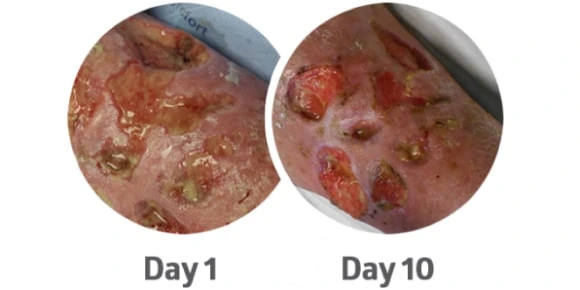
Improvement in wound size and necrotic area
A 52-year-old female with infected Pyoderma Gangrenosum. Individual results may vary.
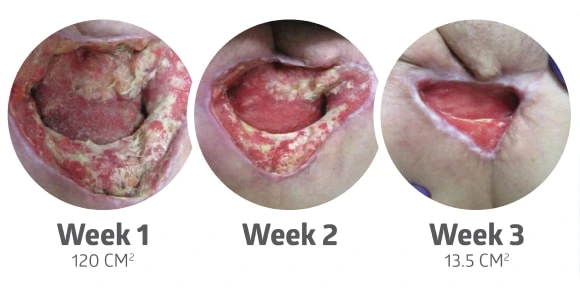
Reduction in slough, debris and total wound size
A 55-year-old female with surgical dehiscence on groin following femoral endarterectomy. PluroGel reduced the wound size by 89%.3 Individual results may vary.

“Patient’s radiation dermatitis and discomfort during dressing changes improved remarkably.”
—Kari Price, BSN, RN, CPN, CWON
PluroGel effectively disrupts biofilm after 3 days
Experience PluroGel for yourself: Request a sample
Simply complete this form and a Skin Health specialist will contact you soon to coordinate your no-cost sample.
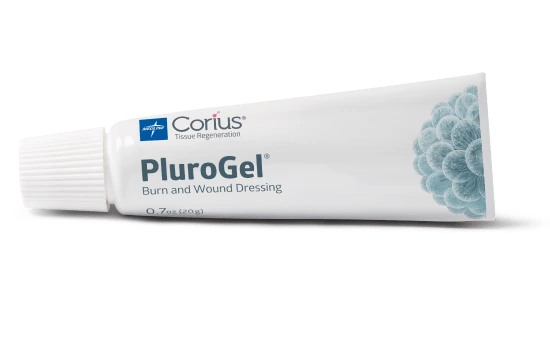
* Indicates required field
References:
- 1. Yang, Q., Larose, C., Della Porta, A. C., Schultz, G. S., & Gibson, D. J. (2017). A surfactant-based wound dressing can reduce bacterial biofilms in a porcine skin explant model. International wound journal, 14(2), 408–413. https://doi.org/10.1111/iwj.12619
- Data on file.
- Ratliff CR. Management of a Groin Wound Using a Concentrated Surfactant-Based Gel Dressing. Journal of Wound, Ostomy, and Continence Nursing. 2018 Sep/Oct;45(5):465-467. DOI: 10.1097/won.0000000000000467.
